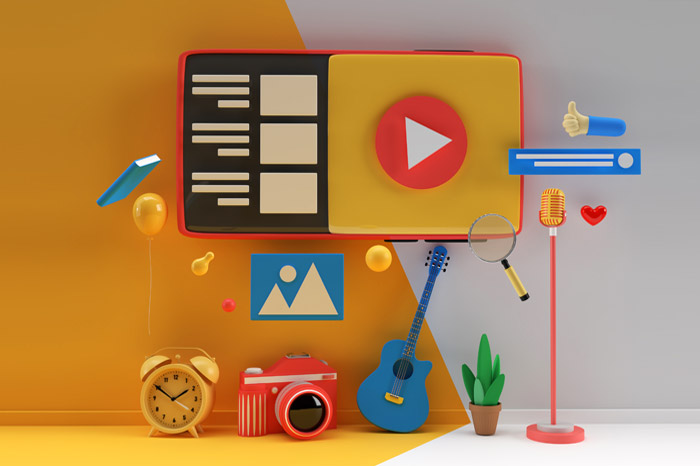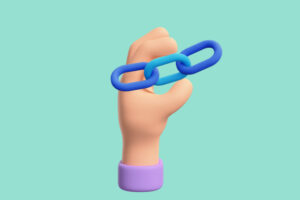A user-friendly website is in fact a well-designed website. All particular elements, texts, titles, appearance, and menu, are made to offer the visitor a pleasant and relaxing experience. It is a well-tuned machine.
Our purpose is always for the user to remain on site, browse the pages and return to it. The company’s ultimate goal is either to buy its products, subscribe to the newsletter, or interact with the brand.
Below we will see the best ways to make your website more user-friendly and improve your site traffic.
Easy navigation
Navigation is the be-all and end-all when we discuss site usability. First of all, navigation must be fast and simple. Make sure the navigation is intuitive. For example, the brand logo is usually in the top left corner, and the users clicking on it commonly expect to return to the homepage.
Moreover, the site’s navigation menu should provide important information for the topics, and clicking on each of them should display sub-sections in a format of a dropdown list and logical consistency. At first, it will help the users quickly find what they are looking for. Offer them also the option to search by themselves by adding an internal search engine accessible from every page on your site.
Furthermore, users should be able to find on every page the Information for the business, Contact Info, and Privacy Policy. This will improve the trust in your brand and contribute to a positive user experience.
In most cases, it is worth analyzing the navigation on your main competitors’ sites. There are always some “patterns” in navigation that for many years are predetermined in the user’s mind. It is always important not to move far away from them.
An integrated contact page
For most websites, the contact page is crucial for visitors looking for ways of contact. So, make sure you provide all the ways of contact (contact form, email, social media, phones) and the much better visibility and use of them, especially from mobile devices. As we mentioned above, finding the contact page should be easy for the users on your website.
Loading time
The “magic” page load time is said to be 3 seconds. It may seem too short, but the truth is that users become disappointed if they need to wait for more.
You can check your site speed using this Google tool and find suggestions for a higher loading speed. We don’t know if you can get it to 3 seconds, but at least you can try!
Aesthetics & Colors

Focus on the impression you make through the colors and patterns you use on your website. The color palette you choose should consist of a few colors which reflect your brand aesthetic, while at the same time providing a color contrast between the background and the main text so that the content is easily readable.
Most users are used to reading texts in a dark color on a lighter and brighter background. So, offer them what they need. Likewise, the font you use for the main text and headings should be easily readable. Also, do not forget the general layout of texts, headings, Call-to-actions, photos, etc., that they have the appropriate margins and are readable.
Understandable content
Make sure your texts are easily readable. It has to do with the very way a text is written, which may seem difficult for a visitor to understand, and raise questions instead of answering them. If your site’s content is not strictly scientific or technical, then you should avoid using technical and obscure terminology. You don’t want your visitors to feel less intelligent, as such would discourage them from continuing the reading.
Reading becomes easier if you organize your texts into short and distinct paragraphs with headers and bullet points so that the users can find quickly, at a glance, what they need, without having to read the whole text.
You can also improve your content with photos as long as they fit smoothly into the text, do not distract the users’ attention, and are ideally compatible with the website’s colors.
Mobile First & Responsive
Since most users search and read from their mobile devices, it is crucial to ensure that your website is user-friendly no matter what device they are reading from. In fact, it means legible fonts without the need to enlarge, an accessible menu without searching, big buttons easy to click on from a mobile device, and of course a fast response time.
In terms of “mobile first”, as we keep saying, it is interesting sometimes to add or even remove elements/ information for users entering from a mobile device. For example, a phone with a direct link to call on the homepage seems ideal for anyone reading from a mobile and wants to call you directly.
Adaptation according to what the audience wants
Once you have insight into what visitors are looking for on your website, you can make their navigation easier and faster. For example, if you notice, in Analytics, that a product or article category has increased traffic, think about adding it to the main menu to help visitors find it more quickly.
Similarly, it is worth adjusting your website design and especially the homepage. Tools that allow the creation of heatmaps will help you understand where your visitors click more and where they don’t, information that you can use for a more effective User-Experience.
Give detailed information
When website visitors land on your page, they want to receive the appropriate information to make a decision regarding your product or service.
If your visitors have to search too much for this information, they may become frustrated and leave for a competitor’s website. Pay extra attention to providing the appropriate multimedia (video, photos) and prompts that can lead the users to contact, purchase, or any other important link.
A-B Testing
Perhaps testing is the best way to find what makes the difference in how user-friendly your website is. Using tools that offer you the ability for A-B Testing, such as Google Optimize (which is free), you can try running experiments with different pages, slight or major changes between them, and finally, choose what made the difference for your visitors.
In the end, don’t forget that once you have mastered the basics, you will learn the rest through your own audience.






Join the Discussion